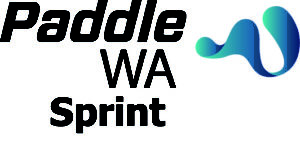Canoe Sprint Racing is one of the best-known competitive canoeing disciplines in Australia. This is probably due to its inclusion in the Olympic Games since 1936 and Australia’s involvement in all Olympics since the 1956 Melbourne Olympic Games.
Canoe Sprint Racing is all about speed on flat water over distances of 200 metres, 500 metres and 1000 metres. The craft that have been developed are sleek and fast but unstable. Sprint kayakers use specially designed paddles allowing for extra power and efficiency.
K1, K2 and K4 are the most popular classes of Canoe Sprint kayaking but there are also canoe classes, C1, C2 and C4. Races are contested by guppies (U12), junior, senior and master athletes
The first step to being an arm-chair expert is knowing the difference between a canoe and a kayak. Whilst there are many variances, the two most basic apply to the way in which the craft is propelled and the manner in which the athlete, positions themselves in the boat.
In canoe – an athlete uses a single blade paddle. The athlete kneels on one knee, giving them a distinct and different appearance than that of a kayaker during competition.
Kayakers alternatively, use a double bladed paddle, which is placed in the water, on either side of the craft, in the motion of paddling. As opposed to canoe, kayakers remain in a seated position during competition.
Canoe Sprint first appeared at Olympic level as a demonstration event at the 1924 Paris Games. As the sport grew, it entered the Olympic roster in its own right at the 1936 Berlin Games.
Historically, European nations have dominated Olympic competition, with Germany leading the way, having won 40 gold, 29 silver and 26 bronze medals to date.


